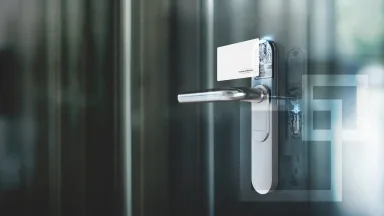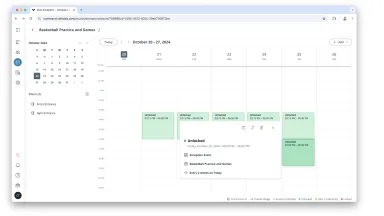Safety in Any Scenario: Enabling Lockdowns During Internet Outages
The ability to immediately and remotely lock doors during an emergency is a key feature of any modern access control system. But security incidents can easily occur alongside other challenges, like power or internet outages, that can leave organizations vulnerable. Fully cloud-based systems, for instance, are hamstrung if the internet goes out.
Verkada’s hybrid cloud approach combines the best of on-prem reliability with the flexibility of cloud managed systems. The emphasis we’ve recently put on building out our peer-to-peer (P2P) communication capabilities reflects the critical importance of device reliability, even - or perhaps especially - when much of the system operates in the cloud. P2P allows local devices to talk directly to each other via the LAN, facilitating critical capabilities that can span hardware devices – like door lockdowns – even in the event of an internet outage.
Secure Local Communication
Peer-to-peer communication allows certain devices within our ecosystem to communicate directly and securely with each other across the local network, without needing to relay information through a central cloud server.
The setup process is automatic and uses the Verkada platform as a central server, which allows devices to establish a more secure connection than would be otherwise possible. Once connected, devices have a secure data channel that allows for communication to take place entirely on the local network.

Customers can easily see P2P connectivity status in Command. This provides assurance that devices are connected, and notifies them when the LAN needs to be changed to ensure the P2P connection remains robust.
Extending Lockdowns
Customers were previously able to trigger a lockdown with a wired panic button, but an internet connection to Command was required for the lockdown to propagate across multiple access controllers and their associated doors.
Now, lockdowns can be fully enacted across local access controllers even when internet connectivity is lost. The lockdown response can also include AUX outputs, such as strobes or sirens, across one or more controllers.
For example, let’s say a user presses a panic button that is wired into access controller A. The configured response flow is to immediately lock all doors that are wired into controller A. Previously, that’s where the response would end when there was no internet connection.
But now with P2P, pressing a panic button wired to controller A can extend the response to controllers B, C, and D, locking down additional doors throughout the facility. It can also trigger AUX outputs that are wired into any of the controllers, to ensure that people throughout the building are aware of what is happening.
Unlocking Additional Features
The ability to trigger building-wide lockdowns during an internet outage is the culmination of much of our previous P2P engineering work. But offline lockdowns are just one example of the features that are made possible by these efforts. Having an AUX output trigger, such as a siren or strobe, in response to a door event (such as a door forced open or held open) uses P2P. License plate recognition (LPR) unlock also uses P2P to send information between cameras and access controllers, instantly unlocking a gate or garage based on a detected license plate number.
Organizations need to ensure that their security systems remain operable under almost any conditions, and P2P is a game changer for critical features like door lockdowns. We are glad to support customers as they continue to uplevel their building security, and we look forward to extending our P2P capabilities to more devices and features down the road.




